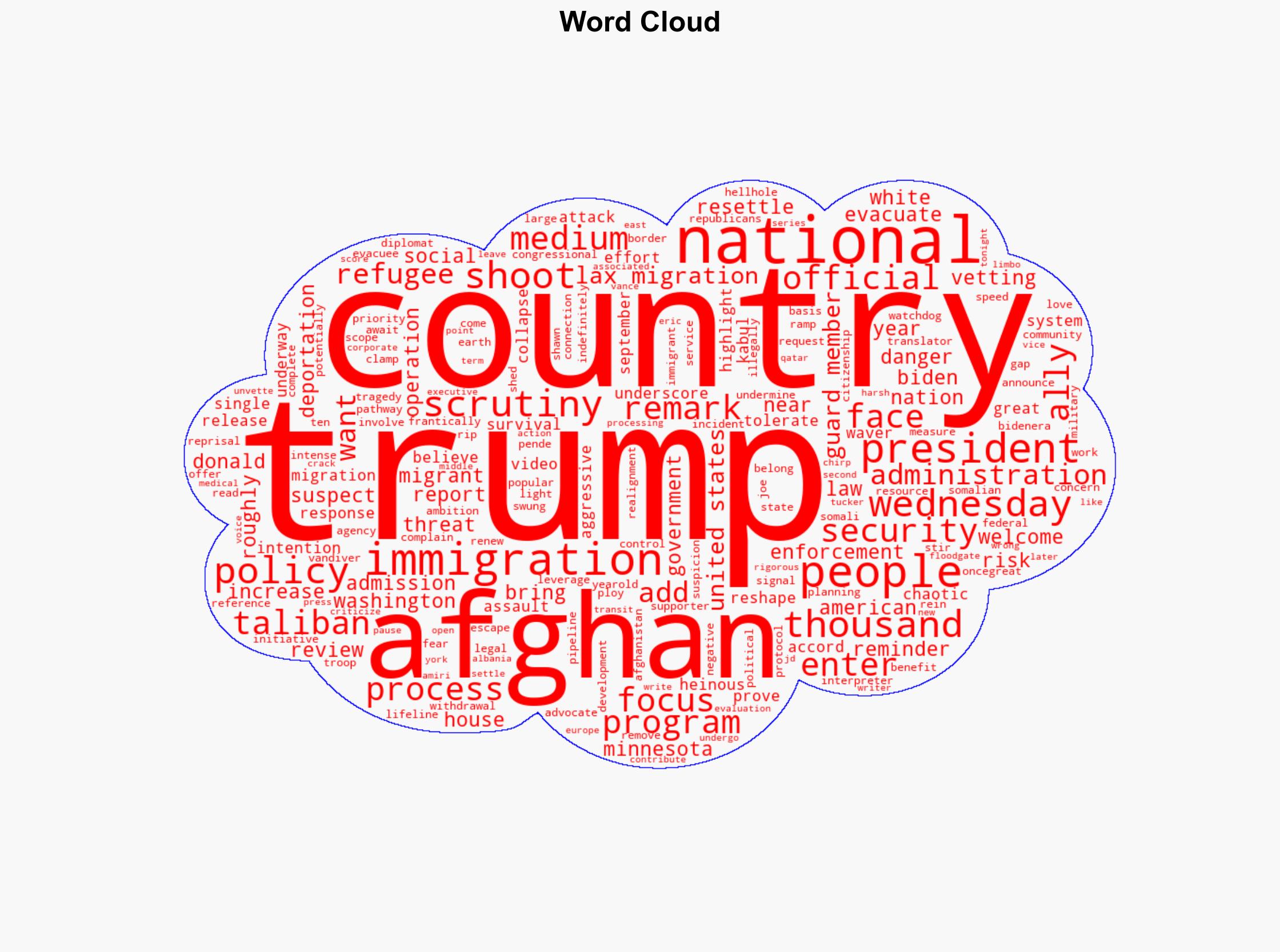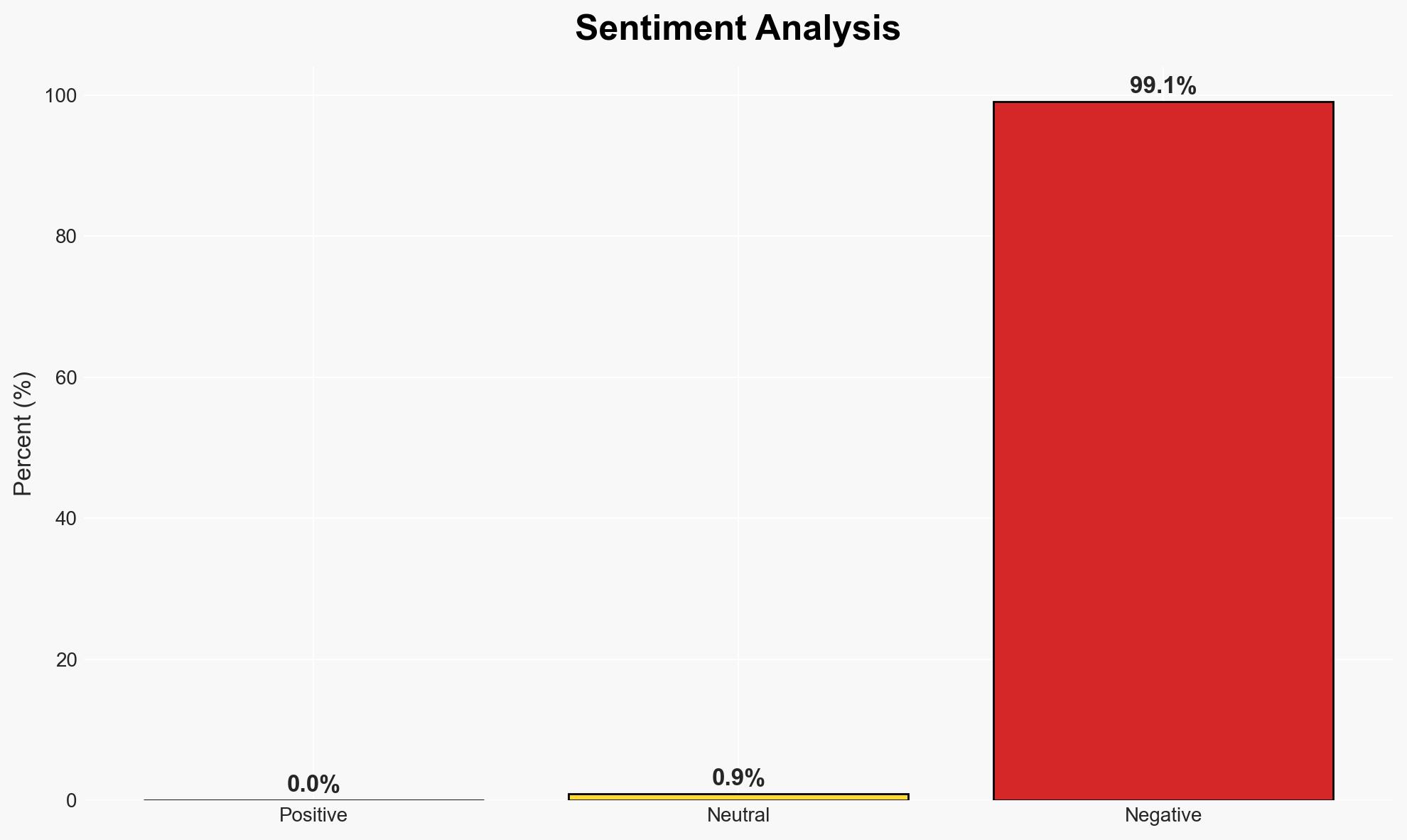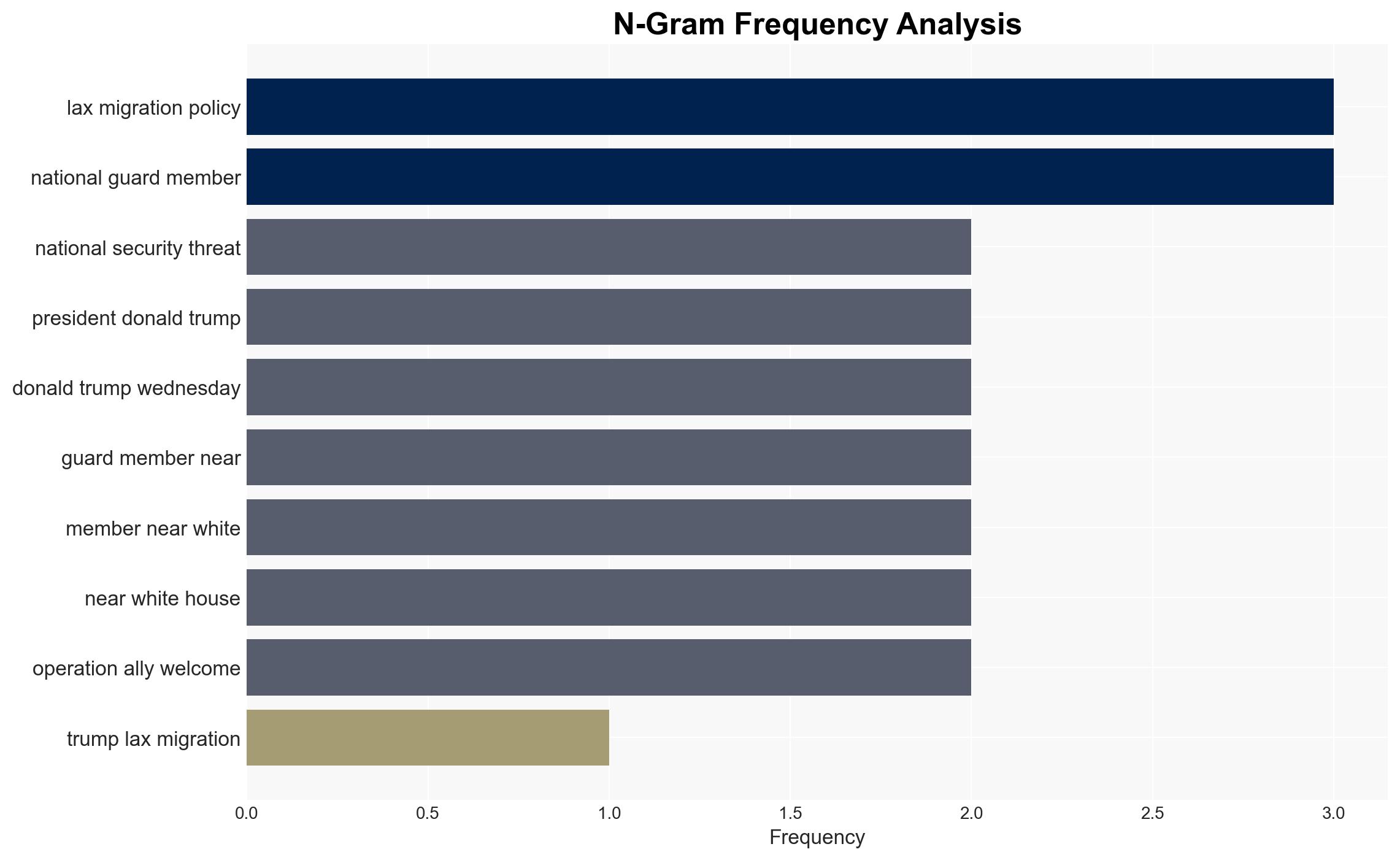Trump links recent National Guard shooting to lax immigration policies as major national security concern.
Published on: 2025-11-27
AI-powered OSINT brief from verified open sources. Automated NLP signal extraction with human verification. See our Methodology and Why WorldWideWatchers.
Intelligence Report: Trump says lax migration policies are top national security threat after National Guard members shot
1. BLUF (Bottom Line Up Front)
Former President Donald Trump has highlighted lax migration policies as a primary national security threat following an attack on a National Guard member near the White House. The incident is being used to underscore the perceived risks associated with Afghan nationals resettled in the U.S. under recent immigration programs. The current assessment suggests that Trump’s narrative aims to influence immigration policy, with moderate confidence in the hypothesis that this is primarily a political maneuver rather than an immediate security threat.
2. Competing Hypotheses
- Hypothesis A: The attack on the National Guard member is directly linked to lax migration policies, particularly concerning Afghan nationals resettled in the U.S. Supporting evidence includes the suspect’s Afghan nationality and entry during the chaotic U.S. withdrawal from Afghanistan. However, there is a lack of direct evidence linking the individual’s actions to systemic policy failures.
- Hypothesis B: The incident is being used politically to advance a narrative against current migration policies, with the attack serving as a convenient catalyst rather than a direct consequence of policy failures. This hypothesis is supported by the timing of Trump’s remarks and the broader political context, including ongoing debates about immigration policy.
- Assessment: Hypothesis B is currently better supported due to the lack of direct evidence linking the attack to policy failures and the political context in which these statements are made. Indicators that could shift this judgment include evidence of systemic security lapses in the vetting process of Afghan nationals.
3. Key Assumptions and Red Flags
- Assumptions: The suspect’s actions are not representative of the broader Afghan resettlement population; the attack was not coordinated or part of a larger plot; political statements are primarily aimed at influencing public opinion rather than reflecting immediate security threats.
- Information Gaps: Detailed information on the suspect’s background and motivations; comprehensive data on the vetting process for Afghan nationals; broader context on the security environment for resettled populations.
- Bias & Deception Risks: Potential confirmation bias in attributing the incident to migration policies; political bias influencing the narrative; lack of independent verification of claims made in political statements.
4. Implications and Strategic Risks
The development could exacerbate political polarization over immigration policy and impact the security environment for resettled populations. It may also influence future policy decisions and resource allocation.
- Political / Geopolitical: Potential for increased political pressure on the current administration to tighten immigration policies, possibly affecting international relations with countries involved in resettlement programs.
- Security / Counter-Terrorism: Heightened scrutiny of resettled populations could lead to increased security measures and potential stigmatization, affecting community relations and integration efforts.
- Cyber / Information Space: The incident may be leveraged in information operations to sway public opinion or discredit political opponents.
- Economic / Social: Potential social tensions and economic impacts on communities with significant resettled populations, affecting social cohesion and local economies.
5. Recommendations and Outlook
- Immediate Actions (0–30 days): Conduct a thorough investigation into the incident to ascertain motivations and prevent similar occurrences; enhance communication strategies to address public concerns and misinformation.
- Medium-Term Posture (1–12 months): Review and, if necessary, strengthen vetting processes for resettled populations; engage with community leaders to foster integration and address security concerns.
- Scenario Outlook:
- Best: Incident is isolated, leading to improved policies and community relations.
- Worst: Incident triggers widespread backlash against resettled populations, resulting in policy overhauls and social unrest.
- Most-Likely: Political discourse intensifies, but practical policy changes remain limited without new evidence of systemic failures.
6. Key Individuals and Entities
- Donald Trump – Former President of the United States
- Joe Biden – President of the United States
- Shawn Vandiver – President of an advocacy group for Afghan evacuees
- JD Vance – Vice President, noted for social media commentary
- Not clearly identifiable from open sources in this snippet – Afghan national suspect
7. Thematic Tags
Structured Analytic Techniques Applied
- Cognitive Bias Stress Test: Expose and correct potential biases in assessments through red-teaming and structured challenge.
- Bayesian Scenario Modeling: Use probabilistic forecasting for conflict trajectories or escalation likelihood.
- Network Influence Mapping: Map relationships between state and non-state actors for impact estimation.
Explore more:
National Security Threats Briefs ·
Daily Summary ·
Support us





